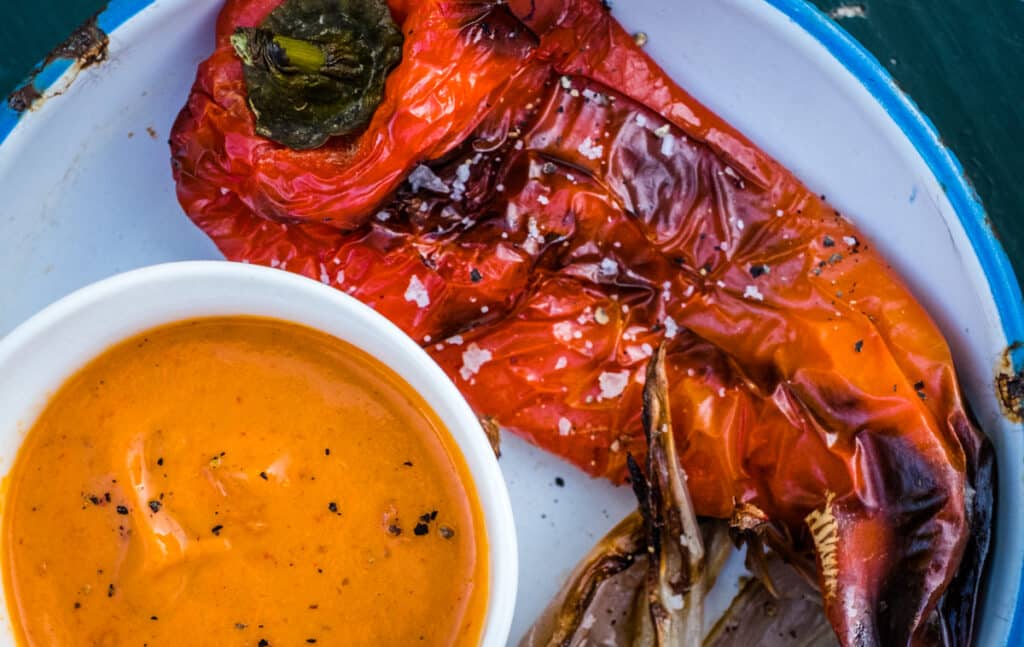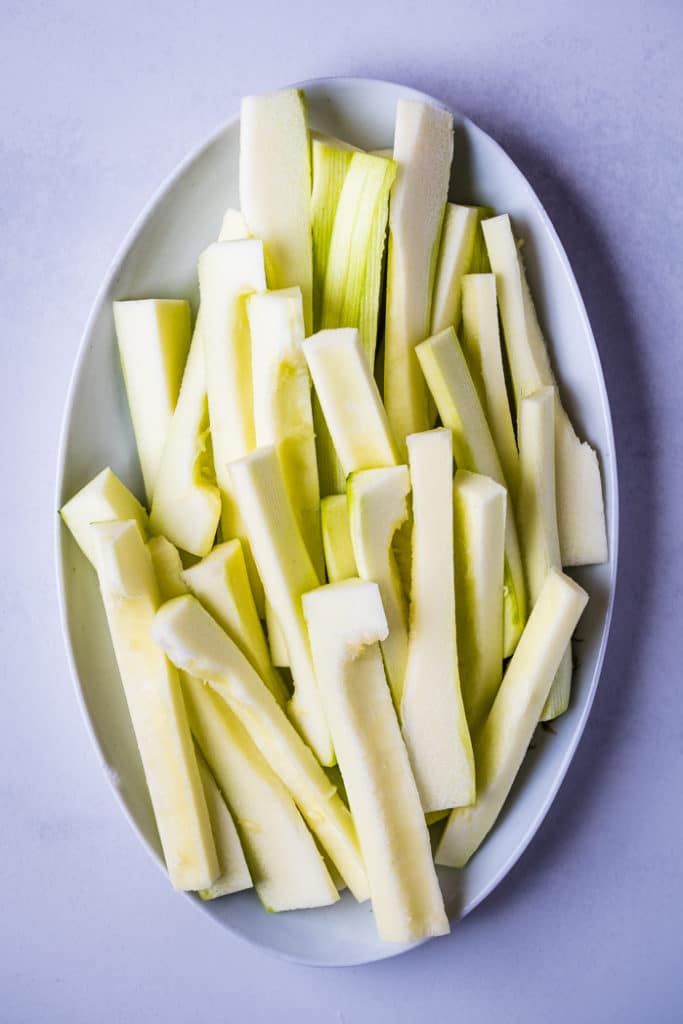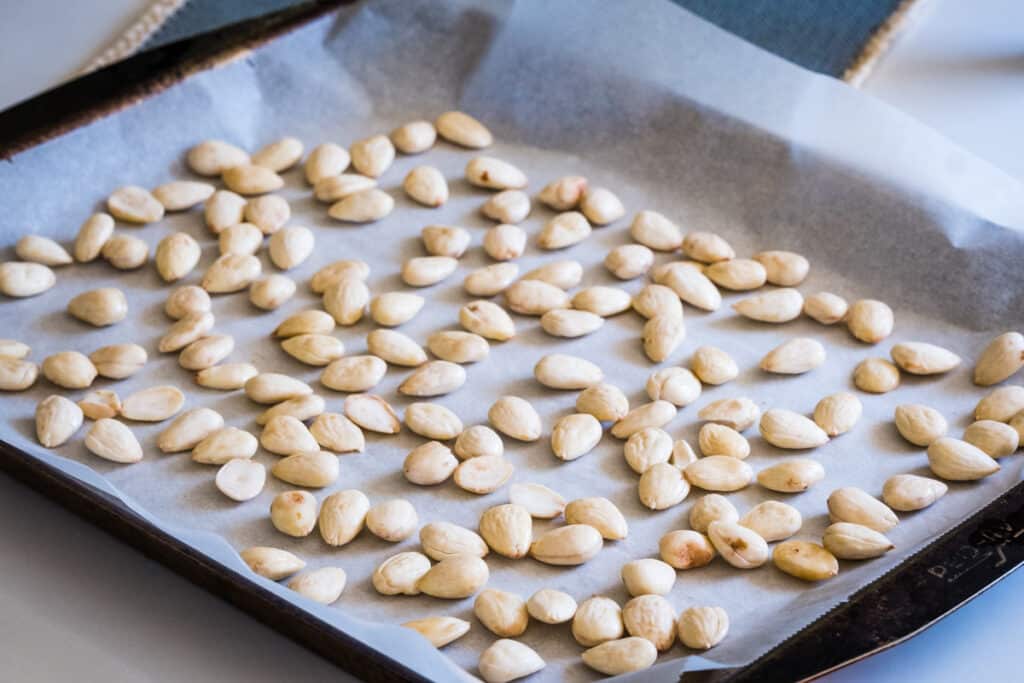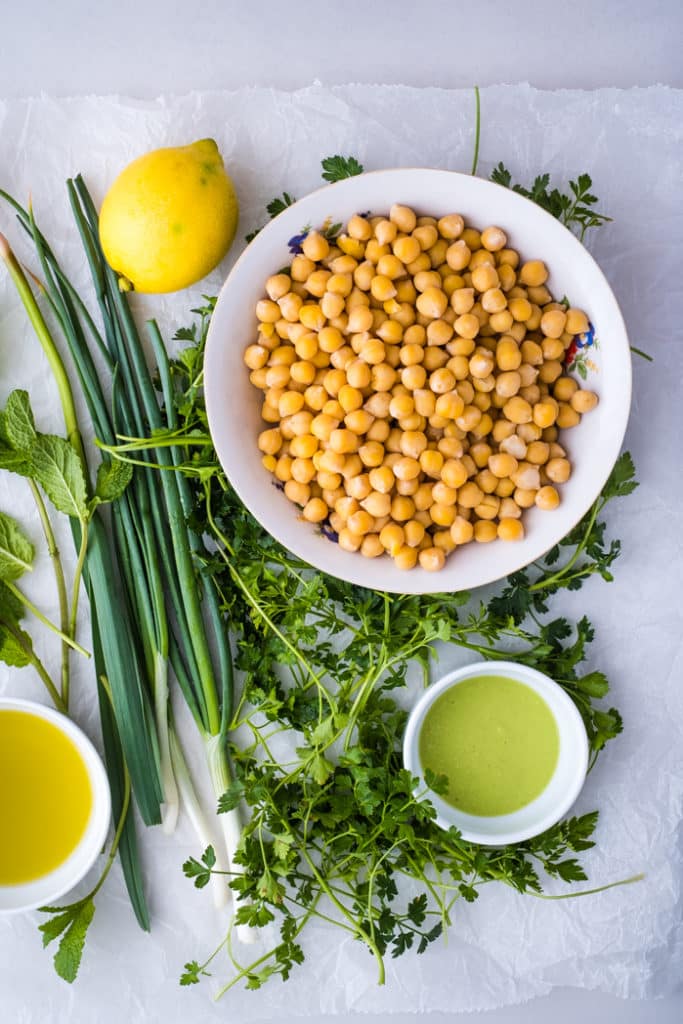Eating as many vegetables as possible is a sure way to improve our health. But what happens when we get stuck in a routine where the only vegetables we eat are tomatoes, peppers, potatoes, eggplant, zucchini, and beans?
These vegetables may have some health benefits, but they are heavy in lectins and should only be a small part of your diet.
When it comes to vegetables, diversification is key. Bring in more vegetables low in lectins, and learn how to prepare your favorite high-lectin foods to reduce their lectin content. It’s easier than you think.
A diet high in lectin foods
I was that person who would only eat nightshades and be proud of my vegetable intake. But I also had terrible acid reflux, a lot of inflammation, I was very stiff, and I was packing pounds every day, no matter how hard I tried to be healthy.
I found out about lectins more than seven years ago (in 2017), and I was shocked to find out how high in lectins my diet was. It was an interview with Dr. Steven Gundry, where he talked about ‘healthy foods that might make us sick’.
While in the beginning, I gave up these high-lectin foods completely, with time, I started to add them back in slowly and prepared in a way that would not sabotage my health journey.
At first, your reaction might be: So what’s left to eat? But I promise you, once you start exploring outside this group of vegetables (or rather fruits), you will be surprised at how many choices we have.
For an extensive list of what you can eat if you want to eliminate lectins from your diet, check out our Plant Paradox, Lectin-Free Food List.
Now let’s explore lectins and methods of preparation that will help us reduce lectin content in certain vegetables.
What are lectins?
But first, what are lectins? According to Dr. Steven Gundry, the author of The Plant Paradox book, lectins are large proteins found in plants and animals. They have been used strategically by plants as a defense system for survival, targeting and attaching themselves to sugar molecules.
A lectin is a protein that binds to sialic acid, a sugar molecule found in the gut, brain, nerve endings, joints, and bodily fluids, interrupting messaging between cells and causing toxic or inflammation reactions.
Lectins were discovered in 1884, as part of an investigation into different blood types. If you’ve heard about dietary lectins before the Plant Paradox book was published, you probably heard in the context of the blood type diet.
The most famous type of lectin is gluten, the protein found in wheat, barley, rye, and sometimes oats. But there are many harmful lectins (and some good ones, too!) besides gluten.
Wheat Germ Agglutinin (WGA), is a very small protein found in grains, more abundantly in the wheat kernel. So, when eating whole-grain or white bread, we are not only exposed to gluten and other bigger lectins but also to WGA, which can pass the mucosal barrier of your gut even if your gut is not compromised.
Plant lectins are found in most plants’ seeds, some grains (read more about grains and lectins in this article), skins, rinds, and leaves. They are considered anti-nutrients that interfere with the absorption of nutrients, and especially minerals, in the gut.
The most publicized accounts report severe reactions in people eating even small amounts of undercooked or raw kidney beans. They contain phytohaemagglutinin, a type of lectin that can cause red blood cells to clump together. It can also produce nausea, vomiting, stomach upset, and diarrhea. (SOURCE)
Who should avoid lectins?
You should consider removing lectins from your diet for a while to understand if and how they affect you, especially if you experience any of the below health conditions:
- you have an autoimmune disease
- you have type 2 diabetes or blood sugar dysregulation
- you have difficulty with weight loss
- you have rheumatoid arthritis
- you have a leaky gut, or any gut health problem
- you feel you already have a healthy lifestyle but still struggle with health issues and weight gain (this was me)
While these vegetables can be added back in if correctly prepared, total elimination for a limited period of time and a slow reintroduction are necessary to assess whether they are a problem for you.
Please work with your doctor, nutritionist, or health coach to guide and support you through this elimination phase.
What is a lectin-free diet?
A lectin-free diet is a diet where foods high in lectins are eliminated for a limited period to give an inflamed and unbalanced gut a chance to recover.
After this elimination phase (which can last from 6 weeks to a year or even more), foods high in lectins are added back into the diet, in moderation, when they are prepared accordingly to reduce their lectin content.
Several foods are never encouraged to be reintroduced, no matter the preparation:
- processed foods
- peanuts and cashews
- corn and wheat (especially if conventional)
- animal protein industrially farmed and fed corn and soy (CAFO)
A lectin-free diet is part of a larger lifestyle approach called The Plant Paradox, a healthy lifestyle guideline created by Dr. Steven Gundry. Other than the elimination of heavy-lectin foods, The Plant Paradox advocates for the elimination of:
- mostly all processed foods
- processed sugar as well as so-called “natural sugars” such as maple syrup, agave syrup, coconut sugar, etc
- fruits out of their season and fruit juices (fruits low in sugar are allowed)
- A1 casein dairy products
- endocrine disruptors
- animal protein that is industrially farmed and fed an unnatural diet
For a comprehensive Plant Paradox YES and NO Food List, visit this article, where you can download a shopping list: The Plant Paradox Food List and Shopping List 2022 (Free Printable PDF)
Myth Busting
One of the biggest misconceptions about a lectin-free diet is that it encourages the elimination of plant foods, which could not be further from the truth. In fact, the plant paradox program encourages the reduction of animal protein and a mostly vegetarian diet. Still, its flexible nature can be applied to any lifestyle, from carnivore to vegan.
While the total elimination of foods high in lectins is encouraged at the beginning, especially if you are dealing with an autoimmune condition, they can be reintroduced depending on how you respond to them.
Let’s find out what are the preparation methods to reduce the lectin content in these foods.
What foods have lectins?
List of foods high in lectins:
- Nightshade vegetables: tomatoes, peppers, potatoes, eggplant, goji berries
- Cucurbits: cucumbers, zucchini, pumpkin, squash
- Beans and legumes: chickpeas, peas, lentils, soy, all beans, and especially red kidney beans
- Some grains and pseudo-grains: wheat, rye, oats, rice, quinoa, buckwheat
- Almonds with skins, peanuts, and cashews
Note: Although they are generally referred to as vegetables, tomatoes, peppers, and eggplants are botanically fruits.
Does cooking destroy lectins?
Well, it depends on who you ask. If you ask those opposing a lectin-free diet, they will say lectins are entirely destroyed by cooking. While that may be true in some cases (remember, lectins are everywhere, and not all are dangerous), in the case of high-lectin foods, some additional steps are needed to destroy lectins in food, like soaking, pressure cooking, and fermentation.
How to reduce lectins in your favorite foods?
There are four methods to eliminate lectins in high-lectin foods:
- Removing peels and seeds
- Soaking
- Pressure cooking
- Fermentation
Removing peels and seeds to reduce lectins
If you decide to avoid eating lectins, this method is perfect for nightshades and cucurbits. These are the foods high in lectins that you can enjoy in moderation if you remove peels and seeds:
- tomatoes
- peppers
- eggplant
- potatoes
- cucumbers
- zucchini
- pumpkin
- squash
- almonds
In the case of peppers and eggplant, the easiest way to remove peels and seeds is by roasting or grilling them. Then the peels will come off easily, and the seeds can be separated and removed, even in eggplant.
Tomatoes can be peeled with a vegetable peeler or briefly blanched. Scoop the seeds out.

Cucumbers, zucchini, and squashes are easy to peel. Scoop the seeds out with a teaspoon. In many countries in southern Europe, cucumbers are peeled and deseeded before being added to salads.
When I saw this practice in the South of France about 15 years ago, I didn’t understand why. In authentic Greek restaurants, the famous Greek salad is made with peeled and deseeded cucumbers.

Canned Italian tomatoes or tomato sauces are usually peeled and deseeded, as this is the traditional way of preparing and canning tomatoes in Italy. Not all, though, so always look at the label and read the ingredients to ensure no sugar is added.
When making ketchup and tomato sauce for the winter, my parents first pass the tomatoes through a tomato press that separates the skins and seeds from the pulp.
Roasted sweet peppers, peeled and deseeded, can be found in jars. Read labels and ingredients to make sure they are clean. In case the seeds are not removed, you can easily do it. Peppers are also high in pesticides, so make sure you choose an organic brand.

You can also roast papers at home. It can be done on an open fire, on a grill, or even on a pan or in the oven. After you roast them, put them in a glass container, sprinkle them with salt and cover them for about 10 minutes.
The blistered skins will come off easily. Remove the seeds too, add some extra virgin olive oil, apple cider vinegar, and salt, and you have a delicious roasted peppers salad. Or mix them with other condiments and flavors and make a delicious sauce.
Zacusca is a traditional Romanian (and Eastern European) canned vegetable stew made of tomatoes, peppers, and eggplant. While it is extremely delicious, it can be very hard on the digestive system.
Because I do like it so much and it is soul food for me, I recreated a version that is low in lectin: Zacusca, a Traditional Romanian Stew, made Low-Lectin.
Zucchini is easy to peel, and the seeds can be scooped out. These are two of my favorite ways to use zucchini when they are in season:


Almonds’ skins are high in lectins, but soaking and peeling them will solve the lectin issue and will make them a healthy addition to your diet. More about almonds as part of the plant paradox program here: Do Almonds Have Lectins? All Things Almonds.
Almond flour is made with blanched almonds, but the almond meal is made with whole almonds. While the majority of almond butter on the market is made of whole almonds, a few brands make Blanched Almond Butter, also called white almond butter.
My favorite way to blanch almonds is to soak them almonds overnight, in a glass container, in the refrigerator. On the second day, the peels come off easily.
To make almond milk, blend blanched almonds with filtered water and add your favorite flavorings: a pinch of salt, sweetener, vanilla, cinnamon, or even a date for more sweetness. If the almonds are fresh and of good quality, the milk will taste amazing.
You can also use store-bought white almond butter to mix with water and make almond milk.
Almonds are one of those foods I almost always buy organic, as they are contaminated with glyphosate, and toxic chemicals are used in the blanching process. Marcona almonds from Spain are my favorite almonds.

Soaking and pressure-cooking to reduce lectins in foods
This method not only helps reduce lectins in beans and legumes, but it also helps remove other anti-nutrients such as phytic acid. Works with:
- rice
- all beans
- lentils
- chickpeas
- quinoa and buckwheat
- nightshades
Wheat and rye can’t be pressure-cooked because pressure-cooking does not remove gluten.
Beans and chickpeas must be soaked overnight. Change the water three to four times, then pressure-cook them according to your pressure cooker instructions.
Canned beans should be soaked and pressure cooked, but to make sure, check with the companies that produce those beans to confirm if this is the case. Choose an organic, BPA-free brand, as chickpeas and beans tend to be loaded with pesticides.
In the US, two brands tick all these boxes: Eden and Jovial. The latter reads on the front label: “Soaked overnight and pressure-cooked”. I love a brand that makes your life easier 🙂
Rice and lentils must be rinsed well (until water comes out clean), soaked for an hour, then pressure-cooked.
The problem with lentils is that they lose their shape if they are soaked or pressure-cooked for too long. Yellow lentils will go to mush, but they are perfect for making creamy lentil soup. French green lentils are the best when it comes to holding their shape, so you can use them for salads or stews where you want some texture.
To cook Indian Basmati rice, I usually rinse it well, soak it for one hour, then pressure cook with fresh water, a 1:1 ratio, for 4 minutes. Black rice (forbidden rice) or red rice will require more water (about 1:1.25) and about 9-10 minutes of pressure cooking.
If in doubt, check the instructions of your pressure cooker or online resources for your pressure cooker brand.

NOTE on consuming rice: For the best nutritional profile, the rice should be cooled (in the refrigerator) before being consumed and/or reheated. Rice is a simple starch with a high glycemic index when consumed immediately after cooking. After cooling, the simple starches will become resistant starches and will have a much lower impact on your glucose levels.
Pressure cooking also helps with removing lectins in nightshades and cucurbits. Whenever you use these vegetables in cooking, use a pressure cooker, especially if you didn’t peel and deseed them. And even if you do, the extra step of pressure cooking will reduce lectins further.
NOTE on consuming potatoes: Like rice, potatoes must be cooled before consumption. This way, you allow the simple starch to become resistant starch. However, the peak of resistant starch will be when they are cold, so preferably don’t reheat them. Also, while the general rule for nightshades is peeling, potatoes’ peak nutritional value is when they are cooked in their skins. So when I cook potatoes (please choose organic), I pressure cook them whole (depending on their size, it can take 3-6 minutes), cool them, and then use them to make this delicious Healthy Potato Salad. Occasionally, I’ll add them to a soup or roast them, but I do it rarely.
Here you find a few low-lectin recipes using beans and rice:
- Reintroducing Beans. 3 Low-Histamine, Low-Lectin Recipes
- Low-Lectin Kitchari Recipe for a 3-Day Ayurvedic Cleanse
- Chicken and Tahini Salad with Chickpeas and Asparagus
- Asparagus and Chickpea Salad with Black Rice
- Beef Burrito Bowl with Cauliflower Rice
- Creamy Lentil Soup with Vegetables
- Adzuki Bean Brownies with Olive Oil and Macadamia Nuts
Fermentation to reduce lectins in foods (and other anti-nutrients)
Fermentation is an ancient method of food preparation to reduce anti-nutrients in foods and increase the bioavailability of micronutrients.
You can apply fermentation to any plant, but it is especially helpful for grains, beans, nightshades, and cucurbits.
That’s why miso and tempeh – both made with fermented soybeans and sometimes other grains like rice – are approved on the plant paradox program. But since soybeans are usually GMO and contaminated with glyphosate, ensure these products are certified organic.
Fermentation also works with peppers. Sriracha, Tabasco Red, and Kimchi are ok to have on a lectin-free diet.
You can find a fermentation method here: How to Make Fermented Vegetables.
Wheat, barley, and oats are heavy in lectins and generally not allowed on a lectin-free diet or the plant paradox program. However, if you HAVE TO eat bread, make sure it is made with organic wheat and prepared with a traditional sourdough method. The fermentation will lower gluten and lectins and will make the minerals in grains more bioavailable.
Some grains, even if they are gluten-free and lectin-free (millet, sorghum, teff), will still have phytic acid and other anti-nutrients. When making lectin-free and gluten-free bread, I use my sourdough method, which helps neutralize anti-nutrients: Gluten-Free Sourdough Bread Recipe with Millet and Sorghum.
Are lectins bad for you?
The foods high in lectins are the plants most consumed in the Western diet. Many of us love them. I considered myself a healthy eater before starting a low-lectin diet (five years ago), but then I realized that the above list made about 90% of the plants in my diet.
Maybe you are feeling just fine eating a diet high in lectins (especially if you are young). But, if you think you are eating healthy and this is not reflected in how you feel, try to remove these foods for a while and see how this affects your health. After a while, you might be able to add them back in moderation, if prepared to reduce their lectin content.
Common symptoms of lectin sensitivity are heartburn, bloating, joint pain, and inflammation, brain fog.
Some people are extremely sensitive to lectins, especially those with arthritis, joint pain, or some auto-immune conditions.
After completely removing them from my diet for about two years, I added some back in small quantities. I usually tolerate them well; however, when I last tested for food intolerances, all nightshades and cucurbits were on my list of food intolerances. After working on removing parasites and toxins from my gut, my list of intolerances reduced considerably.
Bioindividuality is important, and while generally removing lectins might help many of us, there is no “one magical approach that fits all”. I like to act as a detective regarding my health and try different eating methods to understand what suits me best. I encourage you to do the same.
One step you could start with is to analyze your diet and see how much is made of foods high in lectins. If all the vegetables you eat daily are on the list above, you might want to consider diversifying. Bring in more vegetables, crowding out some foods that are high in lectins.
When you can’t avoid lectins: lectin blocker supplement
There will be times when you can’t control how many lectins you are eating, and for those times, you can have some lectin shield (or another lectin blocker) on hand. Just take two capsules 30 minutes before eating.
The nine potent ingredients in Lectin Shield act together to give your body full anti-lectin support making it easier for your body to digest lectin foods.
Several of the components found in Lectin Shield help counteract the potentially distressing effects of lectins. Some of the ingredients may even have useful antioxidant and anti-fatigue properties.
GundryMD Lectin Shield
If you can’t avoid lectin foods, take two lectin shields 30 minutes before a meal, but don’t use them as an excuse to eat anything and everything.
Get Gundry MD Lectin Shield here and save more than 40% when buying three jars or more.

Note on solanine, a toxic compound found in nightshades
Other than their high lectin content, another reason some people will remove nightshades from their diet is a type of anti-nutrient called solanine, which is considered to be toxic and cause inflammation. People with auto-immune conditions, leaky gut, and IBS are more sensitive to solanine.
While the above preparation and cooking methods will lower the lectin content of these foods, they will not impact their solanine content.
Recap: lectin foods, sensitivity, preparation
- Lectins are anti-nutrients in plants that can trigger inflammation, joint pain, digestive problems, leaky gut, and other auto-immune conditions.
- Not everyone is equally sensitive to them, but the more lectin foods we eat, the more we are prone to experience cumulative health effects of a high-lectin diet.
- Foods high in lectins have health benefits and can safely be consumed if appropriately prepared to reduce their lectin content.
- The foods with the highest lectin content are nightshades, cucurbits, beans and legumes, and some grains.
- The four methods to reduce lectin content in foods are: peeling and deseeding, soaking, pressure-cooking, and fermentation.
- Foods high in lectins can be part of a healthy diet if consumed in moderation, when in season, and prepared to reduce harmful lectin content.
*This post contains affiliated links, which means I get a small commission if you choose to purchase something via one of my links at no extra cost to you.


16 Comments
Melissa Sanders
July 17, 2024 at 7:26 pmThanks for the great info! How about Miyokos butter? Made with coconut oil and FERMENTED cashew milk.
Thx🙏
Claudia
July 18, 2024 at 3:56 amHi Melissa! All I can say on cashews is that I don’t like them. There are so many real / better nuts or nut butters to have. Technically, if fermented, some lectins might be removed. I guess you can try it and see how you feel? -Claudia
ChristinaS1
July 1, 2024 at 5:49 amYou said, “Wheat Germ Agglutinin (WGA), is a type of very small protein found in whole grains, more specifically in the bran.” This is incorrect. its name. It is found in a wheat kernel’s germ (embryo), not the bran (skin).
Claudia
July 2, 2024 at 3:39 amHi Christina! You are right, WGA is found more abundantly in the wheat kernel! Thanks for pointing that out xx -Claudia
Teju
April 19, 2024 at 6:28 amHi Claudia,I cherish your educative post.Are ripe bananas and plantain lectn-free?
Claudia
April 19, 2024 at 6:33 amThank you so much, Teju! Green (unripe) bananas and plantains are ok. The concern with the ripe ones is not the lectins, but the sugar. -Claudia